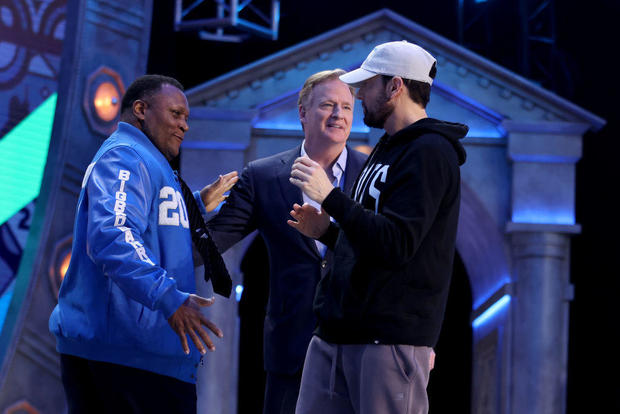Iowa Democratic caucuses: How they work, and what the new rules have changed.
Popular in News & Politics
- The One Thing Donald Trump Can’t Escape in Court
- Cohen’s Testimony Hints At a Strategic Move From the Prosecution in the Hush Money Trial
- There Are Only Three Ways Out of Israel and Hamas’ War
- There’s an Insidious Legal Movement to Make Pregnant Women Second-Class Citizens
Every four years, as the country gears up for the presidential primary contest, pundits remind the American public that it is very important to follow an antiquated political process in Iowa.
The importance bestowed on the process has often baffled people living outside the state, particularly given that it determines just 1 percent of the delegates to the Democratic National Convention. But that’s not the only confusing thing about Iowa’s method for selecting its Democratic candidate. Iowa is one of six states that holds a caucus rather than a primary to select its delegates to the Democratic National Convention. That means that rather than tally up the number of ballots each candidate receives, officials count the number of bodies physically standing in groupings of support for candidates. (The Republican caucuses are structured differently, but this article focuses on the Democratic Party’s system because President Trump won’t face a serious challenge in Iowa.)
It’s a bizarre process, and one that some people (including national party leaders) have complained limits turnout—we’re talking up to three hours or more of standing around in a high school gymnasium on a Monday night. But many Iowans are committed to it, in part because of tradition, and in part because it gives the state a privileged first-in-the-nation position in the primary process. This, in turn, dramatically elevates Iowa’s electoral importance and allows it to help shape the narrative of the race.
AdvertisementThe Iowa caucuses are complicated. But even those who have followed it in the past will be thrown by this year’s setup. After complaints about last election’s caucuses, the state party revamped the process, with new rules meant to eliminate some of the gamesmanship of previous years and create something more akin to a regular polling process. According to the Iowa Democratic Party, the 2020 overhaul makes for “the most historic changes to the caucus process since its creation in 1972.”
Here’s how it works.
The Event
Advertisement Advertisement AdvertisementOn Monday, 1,678 local gathering spots will be converted into caucus locations. Each candidate will be allowed one section of the gym, church, or library serving as the precinct. When the time comes, supporters will physically group themselves into the section belonging to their preferred candidate.
AdvertisementTo be able to participate, registered Democrats will need to be lined up by 7 p.m (Iowans can also register with the party at the event itself). Doors open by 6:30, and each participant will be handed a “presidential preference card” that serves as a backup if a recount is needed. After local officials conduct some party business (representatives for the candidates may themselves be allowed to make speeches in a last-minute appeal to caucusgoers), the main event begins.
There are two rounds to the process. For the first, Iowans gather at the corner of the room representing their top candidate. As that happens, supporters are allowed to try to convince undecided voters to join them. Eventually, all participants will have settled into one of the camps or decided to hold off as an undecided voter.
AdvertisementOfficials tally up the number of heads in each group. If a candidate has scored at least 15 percent of the room, that candidate is declared “viable” and made it to the second round. According to the new rules being implemented this year, the candidate’s supporters are now locked in and unable to change their vote. This rule also creates an incentive not to hold back and wait to see how the first round plays out: If more than 15 percent of voters remain undecided, they become locked in with their undecided bloc, as well.
AdvertisementFor the second round, those who committed to candidates who failed to reach that 15 percent threshold are released in a process known as realignment. They can choose to join an already viable candidate, try to win over other caucusgoers to make their preferred candidate viable, or withdraw from the process entirely. In previous years, multiple rounds of this process would follow, but under the new rules, the final result is sealed with this second round.
Advertisement AdvertisementEach precinct is allocated a certain number of county delegates, based on the caucus turnout from previous election years. The final stage of the night involves electing those county delegates in proportion with the candidates’ number of supporters.
The Next Steps
Those delegates will head to one of the 99 county conventions held on March 21. There, some will be chosen to head on to the state and congressional district conventions. As with the precinct caucuses, the delegates chosen at the county conventions will be in proportion to the candidates’ respective support.
A similar process happens at the district conventions (April 25) and the state convention (June 13), leading to a sum total of 41 pledged delegates, whittled down from the original 2,100 precinct delegates. These pledged delegates (and the state’s eight superdelegates, who are not committed to a specific candidate but who also cannot vote in the first ballot in national convention) will then appear at the Democratic National Convention in Milwaukee in July.
The Numbers
Advertisement Advertisement AdvertisementFor the first time this year, Iowa’s Democratic party is publishing three numbers to describe the evening’s outcome: the vote count after the first round of the caucus; the vote count after the second and final round of the caucus; and the number of delegates for each candidate.
If we’re talking about who “won” Iowa in the most practical sense, that third number will be the most relevant. But the two other numbers could potentially muddle the result of the night. For example, if a candidate wins the most votes in the first round but falls short on delegates after the second round, that candidate may still claim victory by relying on a metric that makes them look like a winner. In a tight race, those kinds of claims could blunt the official winner’s momentum—a major blow to a campaign that could otherwise could claim dominance after the first big night of the presidential race.
Tweet Share Share Comment相关文章

What to expect when a tech bubble bursts
Here's what people who weren't there don't know about the moment the dot-com bubble burst: there was2024-09-22
2024 NFL Draft: Day 1 recap of first
Fans at NFL Draft Party thrilled as Bears pick Caleb Williams at No. 12024-09-22
Tesla Model 3 Performance is here. Here are 5 things that make it great, and 3 drawbacks.
Forget about Ludicrous, it's all about Performance. After months of speculation, rumors and leaks, t2024-09-22
Seawater plant will capture 10 tons of CO2 and make 300 kg of H2 per day
After successful pilot programs, UCLA has partnered with Singapore’s national water agency and other2024-09-22
Webb telescope just snapped image of huge black hole gobbling material
Black holes are misunderstood.They're almost inconceivably dense objects, which grants them immense2024-09-22 本报讯4月4日,市区熊猫大道封闭部分道路施工。4月10日熊猫大道全路段封闭施工。熊猫大道封闭施工后,雅州大道等道路通行能力如何?近日,记者采访了雅安公安交警。“我们近期对交管措施进行了细化和优化,相比2024-09-22
本报讯4月4日,市区熊猫大道封闭部分道路施工。4月10日熊猫大道全路段封闭施工。熊猫大道封闭施工后,雅州大道等道路通行能力如何?近日,记者采访了雅安公安交警。“我们近期对交管措施进行了细化和优化,相比2024-09-22

最新评论